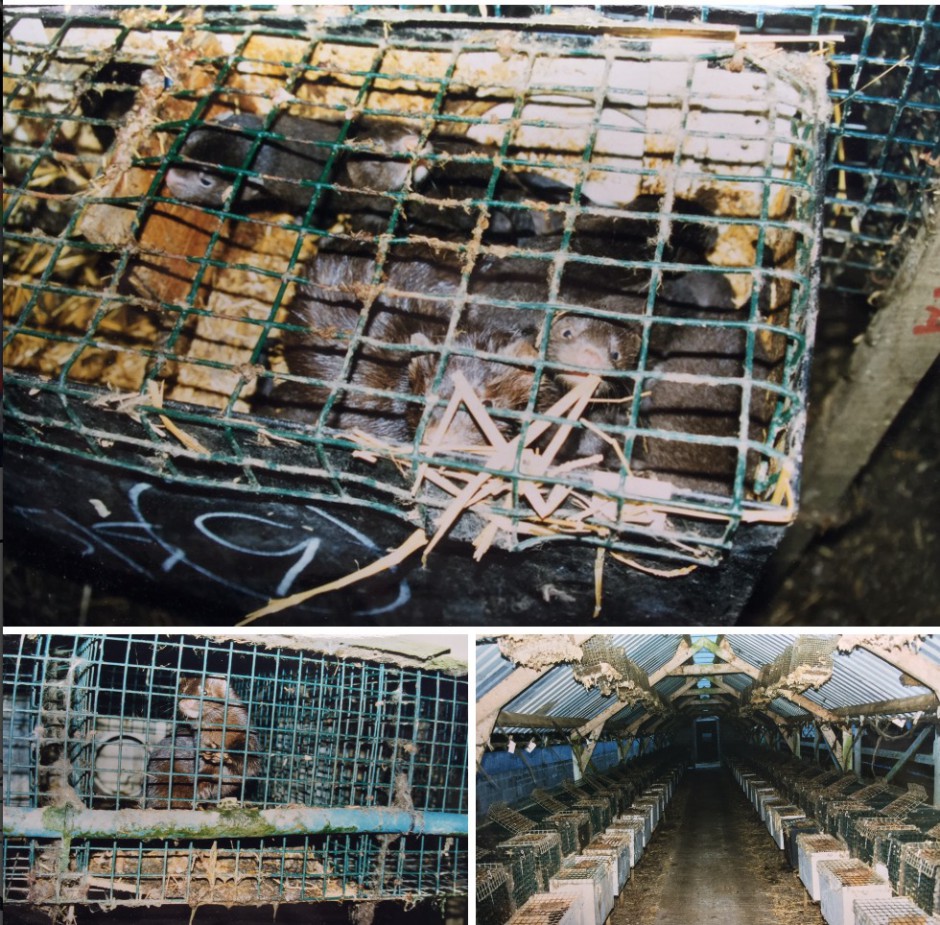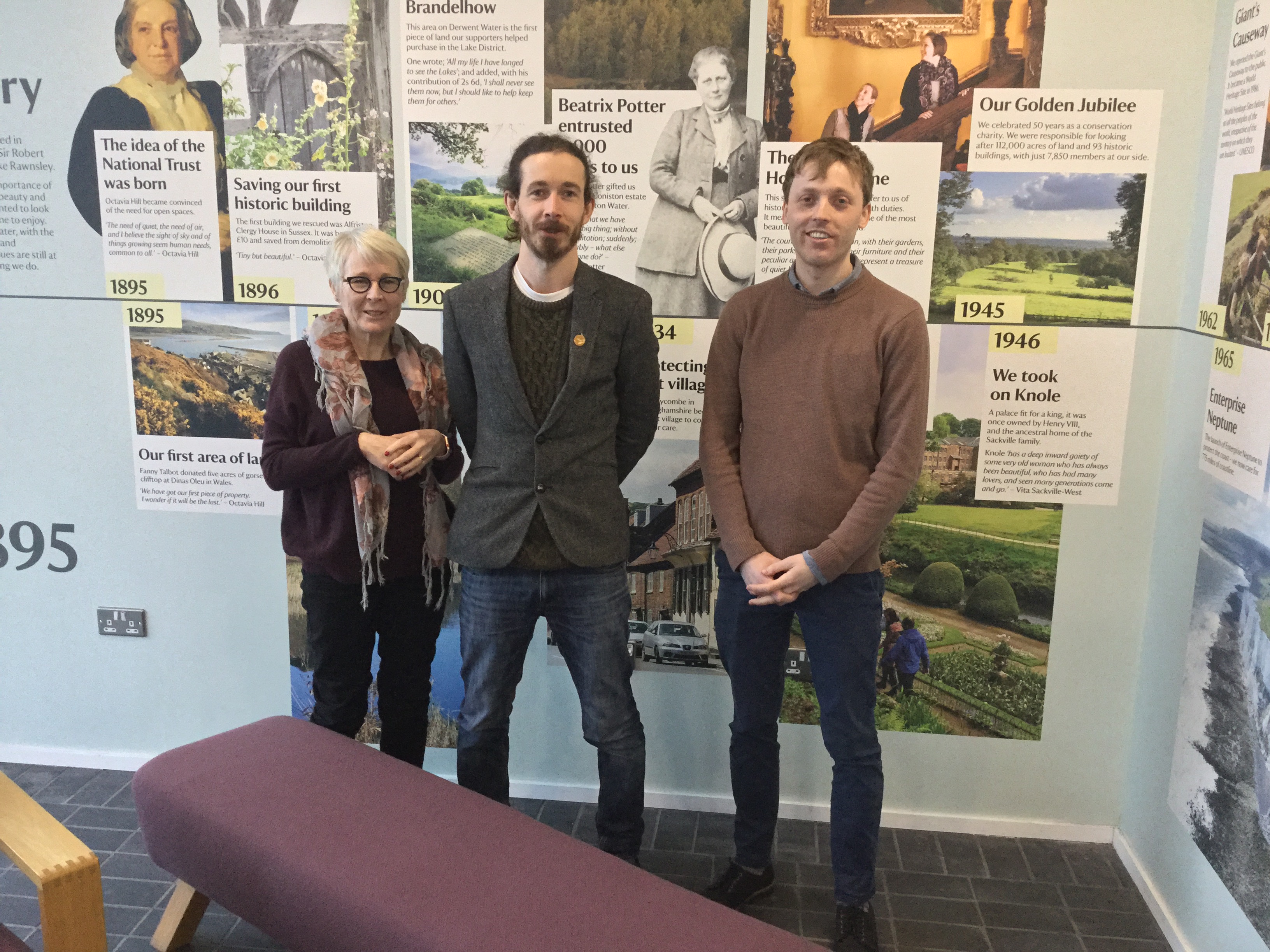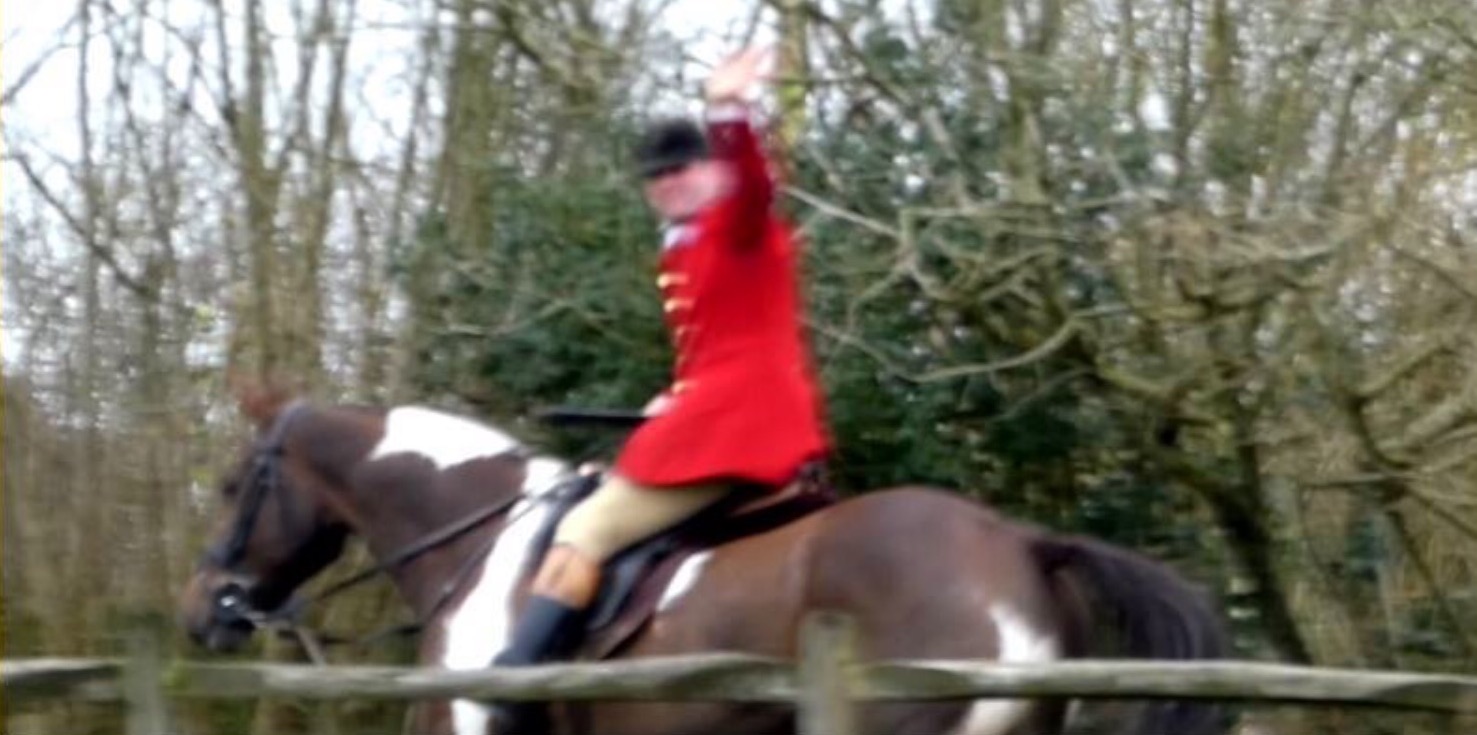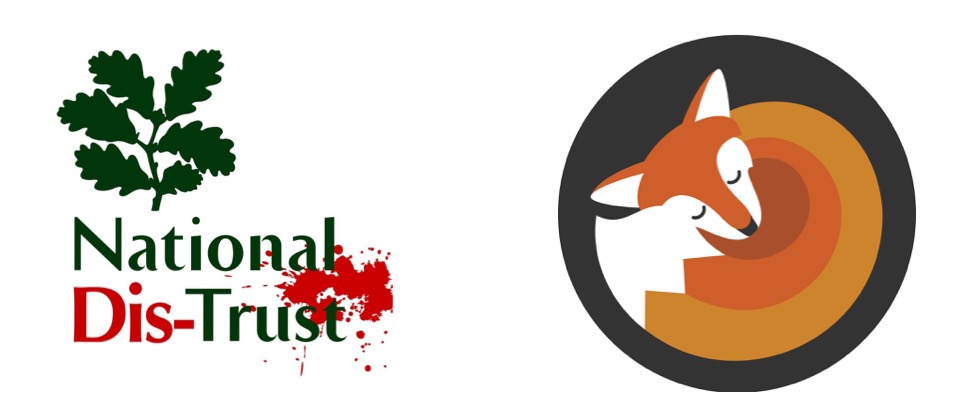27th April 2018
Overview Of April 9th Meeting With National Trust
National Trust Director General, Hilary McGrady, met with National DisTrust and others in Swindon on April 9th 2018 to hear about ongoing concerns regarding so-called ‘trailhunting’ over the conservation charities’ 618,000 acres.
Key points arising from the meeting include:
- From the outset, the Director General stressed that whilst she wanted to listen and learn, so-called trailhunting would continue to be permitted on NT land under licence.
- For the National DisTrust, Helen Beynon said that Trustees had misinformed Members in advance of the 2017 Members Resolution vote to ban so-called trailhunting on NT land with regard to new trailhunting guidelines that were promised but then rescinded upon. Helen said that Trustees advice did influence how many Members voted.
- Many hunts which would usually have applied for a trailhunting licence from the NT did not do so for the 2017/18 season due to “uncertainty” on how new guidance would be applied following the narrowly defeated Members Resolution at the 2017 AGM.
- Consequently, there was a higher than normal incidence of “transgressions” by unlicensed hunts.
- Rescinded guidelines, such as the advance publication of trailhunting routes, resulted from decisions made by Trustees, and not third parties such as the police.
- Trustees will complete an internal Review of licence structures and procedures before the 2018 AGM in October.
- Next season NT staff will undertake observation of trails being laid and followed at one pre-arranged monitoring session for each hunt granted a licence.
- Monitoring by NT staff will be by vehicle and from hills through binoculars.
- Based on a wealth of evidence gathered from observing hunts on NT land and elsewhere, we raised concerns that hunts would seek to mislead NT observers and that this could be easily done.
- While we welcome NT guidelines prohibiting the use of animal-based scent to lay trails, we flagged the implausibility of hunts training hounds to chase artificial trails on NT lands and animal-based trails elsewhere.
- Until recently, many hunts claim to use fox urine lures sourced from America to lay trails. We raised concerns that two Freedom Of Information requests to the Governments own Animal & Plant Health Agency regarding fox urine imports spanning from the beginning of 2014 to the 22nd March 2018 reveal that no import licences were granted.
- We cited an example being the Duke Of Beaufort’s Hunt, which is licenced for so-called trailhunting on NT property. Their Joint Master told Somerset Live (20.03.18), “We use a liquid substance imported from the USA, that gets put on a rag at the end of a whip.” We suggested this was not true.
- We informed the Director General that staff and supporters with some hunts granted a licence by the National Trust for permission for trailhunting on their properties carry Hunting Act and other criminal convictions.
- We explained our belief that trailhunting is a false alibi used by hunts to cynically con law enforcement professionals, misinform the public and provide a cover for illegally hunting wild mammals with dogs.
- Regarding “terriermen”, we were told that people carrying paraphanalia used for digging out foxes would not be allowed on NT property.
National DisTrust and Hounds Off would like to thank Hilary McGrady and Mark Harold (NT Director, Land & Nature) for meeting and engaging with us in these discussions.
National DisTrust & Hounds Off, 18 April 2018
26th April 2018
The American Mink In Britain - Time To Think Again?
 Huntsman of the Devon & Cornwall Minkhounds taunts his dogs with a live mink, 3rd May 1982. Photo: Mike Huskisson, Animal Welfare Information Service (AWIS)
Huntsman of the Devon & Cornwall Minkhounds taunts his dogs with a live mink, 3rd May 1982. Photo: Mike Huskisson, Animal Welfare Information Service (AWIS)
Zoologist Jordi Casamitjana offers a radical perspective on, arguably, Britain’s most maligned wild mammal:
The long and sad story of mink, the forgotten victim. I wish I had done more to help them.
Over the years I have been in the trenches of many animal protection battle fronts, but often I feel that I missed many. We UK wildlife protectionists often go on and on talking about red foxes, some who know a bit more also talk about brown hares, and those really in the know don’t ever forget to mention red deer which are still hunted by the three remaining staghunts in the West Country. But what about mink? Not many animal welfare and conservation organisations stand up for protecting mink, and I think this is very sad. And you will see why in a minute.
Unfortunately, there are people out there who wave the flag of animal lovers but they will not hesitate to tell you that they want to see all mink in the UK killed by any means necessary, be gassing, poisoning, shooting, snaring, trapping, or ripped to pieces by dogs. Others, though, waving the same flag, will say that this is outrageous … but they also want to see them killed though only with one or two of these methods, not the most “barbaric” ones. Well, I want none of them. I don’t want to see any mink killed at all. But by law, if you happen to catch a fox in the UK, you can let it go; if you catch a hare you can let it go; but if you catch mink you have to kill it, or let someone else do it for you.
What has mink done to deserve this? Nothing, other than being mink. Mink are long bodied, dark-coloured, semiaquatic, carnivorous mammals of the family Mustelidae, which also includes weasels, otters and ferrets. The mink that you can find these days in Great Britain is the American mink (Neovison vison). The European mink, which does exist in the continent, apparently never was present in the British Isles. How on earth has the American mink ended up in Great Britain then? If you ask them and they could speak to us, they probably would reply (with a distinct British accent) that they were born here and so were their parents, and their grand parents, and their great grand parents.
Those mink would not really know of course, but what really happened was this: Over 15,000 years ago American mink were just doing their mink thing in America, when a group of descendants from African ape-like primates arrived from the North. As these invaders were alien to the land, and as they had evolved in warm habitats and no longer had thick fur on their bodies, they started looking for animals with fur, killing them, and stealing their fur for warmth. Soon they spotted mink and their beautiful and very dense fur, so started killing them for it. This happened for millennia and these people never seemed to lose their appetite for chasing and killing mink for their skin, even if they did not need it anymore as the world was getting warmer and they had moved South. But some still wanted the mink’s fur because it “look good” on them and made them look important.
So, rather than keep chasing them and killing them someone had the idea of keeping them in small cages so they could kill them without chasing them … and mink farms were created. Across the Atlantic, the people here in Britain (also descendants of African ape-like primates who emigrated there) had already chased and killed most animals with fur to the point of their extinction, so they thought that it would be fun (and profitable) get some of those mink farms over here. And so they did. Britons began farming American mink in the UK from the 1920s. At their peak in the 1950s, there were 400 known fur farms. After a while, though, when people learned about the horrible conditions the mink were kept and killed in in the farms, began losing their appetite for mink coats as wearing one became politically incorrect, so some mink farmers let their mink go free and moved to something else. But the mink, rather than die out, learnt how to adapt to their new habitat. They became wild again and to their merit they survived and thrived. Today mink are widespread in Britain’s mainland, except in the mountainous regions of Scotland, Wales and the Lake District.

Mink live wild in Britain only because humans thought it would be fun & profitable to breed them in battery farms then kill them for their luxurious pelts, as here in Dorset in 1997. Mink have been escaping and breeding in the wild since the 1930s. Photos: Joe Hashman/Respect For Animals
Yes, in the 1990’s some animal liberation activists helped to free some mink at the very end of the demise of the mink farming industry which ended with a ban on mink farming, but the wild population in the UK was already established decades earlier from multiple escapes or deliberate releases of the farmers. In fact, by December 1967, wild mink were present in over half the counties of England and Wales.
You may be forgiven to think this was a happy ending for the sad mink story, but it was not. As they were considered “alien” species and they were predators of “native” species it become acceptable (and legal) to kill any mink found “to save British wildlife”, and any method of killing seemed OK, even being ripped apart by dogs. It didn’t seem to matter if they were helping to keep the population of rabbits down (the other “alien” species many people wanted to exterminate) or that they were partially taking the role of fish predator that the native otters naturally took before they disappeared in certain rivers. They were still wanted all dead.
And as you know the hunting fraternity likes to kill wildlife for fun, so they didn’t waste any time to jump to the opportunity. Otter hunts began to target mink after otters were so depleted in numbers that it became illegal to hunt them in 1978. During a mink hunt, which normally happens throughout spring to autumn, the hounds are followed on foot as they walk or swim along riverbanks while the mink frantically attempt to escape. Unlike otters, mink have small territories (less than a mile of river bank) so once they have been spotted by the hunt they tend not to go far. Eventually they will be caught and ripped to pieces by the hounds, while a crowd of hunt followers amuse themselves with the spectacle.
When the anti-hunting movement celebrated the protection of otters at the end of the 1970s it did not hesitate to continue campaigning when it realised the “otter hunts” just switched to mink from then on, and became the 22 “mink hunts” we still have today. After all, if killing otters with dogs was barbaric, killing mink with the very same dogs was barbaric too. But some people out there disagreed with this compassionate attitude towards mink, vilifying mink as horrible “foreign” vicious creatures that kill all the “British” wildlife they can find, so they deserved to die and be exterminated.
But why kill them? Well, it’s the easy route, isn’t it? If there was an association only for the protection of gazelles in Africa, it probably would advocate for the extermination of cheetahs. If there was one only for protection of ants in South America, it probably would advocate for the extermination of anteaters. If there was a society for the protection of bamboo in Asia, it probably would advocate for the extermination of pandas. It is not the mink’s fault that it predates on critically endangered species such as water voles. That is what predators do - predate on animals they can catch and eat. Mink doesn’t know that the vole it is trying to eat to survive belongs to an endangered species. Many people would not complain if a fox would eat the very same vole (foxes are also one of their common predators). Why are there people that at the same time call for the protection of foxes and the extermination of mink, while water voles are predated by both? Cats often kill wildlife and they certainly can predate on voles too. And domestic cats, like mink, are not native from these islands and were brought up here by humans. Should they all be exterminated too? I don’t think so.
Mink hunting was banned in England and Wales by the Hunting Act 2004 as it bans the hunting of most wild mammals with dogs (regardless if they are native or not), but sadly most hunts circumvent the law and this includes mink hunts. They still go out killing mink claiming that they are now going after rats (one of the exemptions of the Hunting Act). Some of the methods to kill mink have been banned but they can be legally caught and killed by cage and spring traps and unfortunately many people, including many conservation organisations, do.
Of course we need to do as much as we humanely can to protect the water vole and other endangered species from extinction, but I don’t think we can just accept that the best way to do it is by killing all its predators (mink, foxes, otters, stoats, weasels, owls, herons, Marsh harriers, pike, Brown rats, Golden eagles and cats), or by condemning some and pardoning others, as if we really know which species Natural Selection would have “spared” if we had not been here to mess Nature up. After all, post-war intensification of agriculture, water pollution and the loss, fragmentation and degradation of habitat that has taken place since that time have contributed to the water vole decline.
Call me a bunny hugger, but I just simply don’t buy the concept of “blind” lethal conservation. People always find an excuse to kill wildlife, don’t’ they? Let’s kill foxes because they eat chickens, let’s kill badgers because they get ill on cattle fields, let’s kill pigeons because they don’t wear nappies, and let’s kill mink because they have the wrong passports. Even if it is true that in the end mink ends up killing the last vole, it will still not be its fault. It will be our fault, and we cannot simply find our way out of it by continuing killing others. How many mink have to die to save the life of one vole? This “critical” approach is one of the basic tenants of what is called compassionate conservation, which I subscribe to and many other animal protectionist do these days.
So, American mink have been shot and trapped for their fur, kept captive in farms to be killed in horrible conditions, then taken captive to other countries to continue breeding them, then released but persecuted by everyone trying to kill them in all sorts of ways, and still today they are illegally hunted, and legally trapped, snared and shot dead by many people. None of these mink asked for this. We humans are the demons that are inflicting this unsolicited Hell on them since we first encountered them about 15,000 years ago.
But not all is bad in the mink story. Hunt saboteurs have not abandoned mink. And thanks to the ban the population of otters is now increasing and it seems that this is helping to keep the population of mink down, which could persuade mink “controlling” conservationists that perhaps they should stop persecuting mink and let Nature find its own balance, as it always has done.
You see, in these islands I am also considered a “foreigner” by some, so I cannot help to feel a special connection with the unfairly vilified mink. This is why it makes me feel good to see a mink image joining the fox, the stag and the hare on anti-hunting campaign material.
Mink are one of these hunting victims too, you know.
It’s simply not their fault.
© Jordi Casamitjana
Zoologist
24th April 2018
Members Meeting With National Trust: Statement By Helen Beynon
 Helen Beynon, Jack Riggall and Will Morton prior to meeting with National Trust Director Hilary McGrady in Swindon on April 9th 2018.
Helen Beynon, Jack Riggall and Will Morton prior to meeting with National Trust Director Hilary McGrady in Swindon on April 9th 2018.
On 9th April a group of National Trust members met with the organisation’s new Director General to discuss the ongoing concerns over hunting on Trust land. Helen Beynon, Jack Riggall, Will Morton and Joe Hashman attended as members. Hilary McGrady (Director General) and Mark Harold (Director, Land & Nature) represented the Trust.
The meeting came after the narrow defeat of the motion to ban hunting on National Trust land at its AGM in October 2017 as a result of the Chair’s use of discretionary votes allocated to him, and at the end of the latest hunting season which was characterised by the misbehaviour of hunts and the failure of the Trust to adequately implement even the limited measures promised to members ahead of the vote. While we welcomed the opportunity to meet Hilary McGrady, the need to do so simply reflected the lack of robust action taken since the AGM.
We were told Ms McGrady wanted to hear from all sides, so she could get up to speed with the issue of hunting. Given the track record of many of the previously licensed hunts and those licensed last season, we looked to hear an explanation of why the Trustees would continue to persist in their illogical and callous position of maintaining hunts are responsible and trustworthy whilst disregarding the huge raft of evidence supplied to them by National Dis-Trust, other Trust members, animal welfare charities, hunt monitors and saboteurs.
It was confirmed at the meeting that the licensing system will be reviewed before next autumn’s AGM but will not revisit the decision to allow hunting on Trust land. Describing its ambition to reach a place where it can trust hunts, the Trust does not appear to accept that its view, that the majority of hunts behave responsibly, is fatally undermined by the extensive evidence provided to it at all levels prior to the vote and by the experience of this season, and maintained that it requires its own evidence of irresponsible or illegal behaviour.
The Trust’s failure to live up to the limited promises made to members ahead of last year’s vote has been deeply disappointing and the explanations for this remain unsatisfactory. The granting of licences to hunts with a poor track record, including trespassing and even killing foxes on National Trust land, is the clearest example of the deficiencies of the current system. While the Trust has accepted in some instances that the Board of Trustees reversed its position on some elements of its statement on which members based their vote, it has failed to recognise the lack of respect this represents for the democratic process and for those members who participated in it in good faith.
When asked why the Trustees had decided to change the wording of license requirements, leaving members in the same position as prior to the vote, we were told they changed their minds. It seems they did not consider the implications of the statement prior to the AGM or had another motive for doing so, this in the full knowledge that advising members to vote against the resolution would have a significant impact on how they would vote.
Although we were told the Trustees took this subject very seriously, there was no new system in place to monitor the hunts who were hastily granted licenses last season. We were told that staff had kept an eye on things, but couldn’t be everywhere. It seemed that the Trust are unwilling or unable to address the number of hunts who have trespassed and yet then rewarded them when applying for licenses.
Having not meaningfully taken account of the track records of the hunts it has licensed and not even attempted to monitor their activity on Trust land, it is difficult to imagine that the upcoming Review will be fully informed or effective. The most we have been given to expect is that the Trust may finally adhere to some of the conditions it promised its members and that it will begin to monitor the activity of hunts on its land. However, the potential monitoring system as described to us is unlikely to be credible and there is little reason to expect much improvement elsewhere considering these are the same issues we have been highlighting over and over to no avail since last year.
Sadly this new system will involve each hunt being monitored just once a season, with binoculars! The non-animal scent will be sampled at the same time. Hardly a robust system, particularly as hunts will be prewarned. To choose such an ineffectual approach is a slap in the face to members who still hoped to see signs that the statement by the Trustees was in good faith.
We welcomed the opportunity to place salient facts before Hilary McGrady, including a huge body of written and video evidence. However, we remain extremely sceptical that those supposedly hunting a fox-based scent with purpose-trained hounds when off Trust land will hunt an artificial scent whilst on it. Hilary McGrady agreed that without close monitoring none of us can be really sure how hunts operate on the more remote estates. The nature of the scent supposedly used by hunts on Trust land is frankly irrelevant if we cannot ascertain the hounds are trained to pursue anything but fox.
The hunts are as aware as we are that animals continue to be killed by hounds “accidentally”, surprising no one apart from the Trustees it seems. We await answers to several written questions, which we look forward to receiving from the Trust. Those members who are rapidly becoming more familiar with the barbaric realities of hunting with hounds continue to look forward to an era when the Trust genuinely takes note of those who are expert in the field of monitoring illegal hunting and advising on trespass. We hope for a time when the governance process reflects a genuine desire to respond to member opinions, rather than a situation where members have no opportunity to speak to the Trustees directly other than after they have decided their way forward and with resolutions, whatever their outcome, being considered as simply indicators of opinion, which could easily have been ascertained by the number of petitions and member demonstrations we have seen and which will continue until the Trust stop supporting savagely cruel and outdated activities.
© Helen Beynon 24.04.18
NOTE: We will be publishing an Overview of this meeting at the end of this week.
1st April 2018
But….They Say They Only Hunt Trails
 Huntsman of the Eggesford Hounds waves sarcastically at landowners who want to keep him and his hounds off Wheatland Farm in Devon (who took this pic on 30.03.18).
Huntsman of the Eggesford Hounds waves sarcastically at landowners who want to keep him and his hounds off Wheatland Farm in Devon (who took this pic on 30.03.18).
Hunts do not always respect landowner wishes. Often people ask the local hunt to keep staff, followers and hounds off their property but then it happens - again. You need patience, stamina and strong support to stand up for yourself.
Sadly hunt trespass is all too common still. Hounds Off currently supports loads of people who are bemused at the attitude and arrogance of repeat offenders. In the instance below we are also asking ourselves, “But if they chase man-laid trails with dogs that are under control, like they say they do, then how come the Eggesford hounds were running all over forbidden land for the second time this year?”
Eggesford Hunt on Popehouse Moor Again: Wheatland Farm, Devon 30 March 2018
Are you troubled by the hunt? Contact Hounds Off
© Joe Hashman


